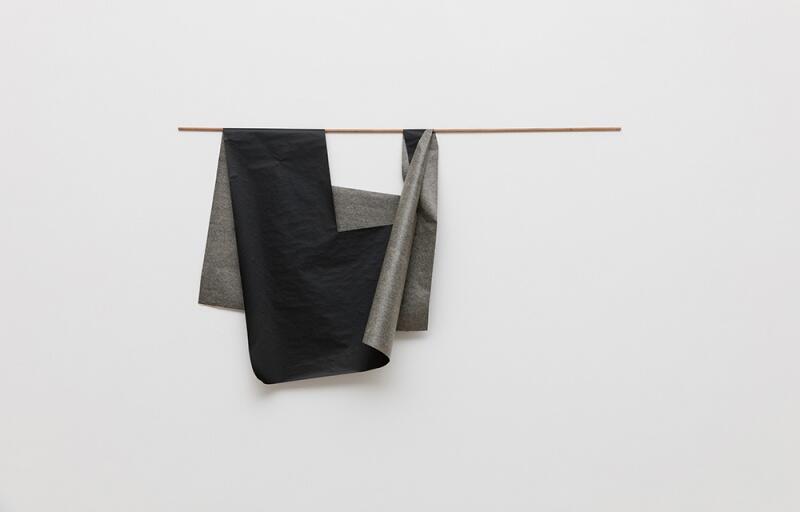Raquel Arnaud Gallery presents ‘The Little Death’ by Carla Chaim
"The Little Death", Carla Chaim’s second solo exhibition at the Raquel Arnaud Gallery, assembles new works with media such as paper, video and photographs.

The motifs of the exhibition, occupying all spaces of the gallery, meander through grief and death while concurrently the accomplishment of pleasure. "How can you begin noticing anew/ again the frail skin that separates the external world from the inner world, a boundary between bodies, between realms. 'Little death' or "la petite mort" in French may deal with endings, a completion, or conclusions of experiences and ruptures, but it also refers more broadly to the spiritual exhaustion that occurs after an orgasm or a short period of melancholy or transcendence that results from the expenditure of the vital force," says Chaim.
With the intention of looking for a new excerpt of the expanded cogitation of drawing, Carla brings this time not only the gesture of the creases, but the sum of different surfaces in a junction of physical planes, thereby creating third bodies. Two bodies that begin to coexist. The artist returns to consider the innermost part of this body, the physical internal and individual sensations, recreated by experiences of the world. A world of mourning, but also, a world of transformation and pleasure. The act of recognizing yourself -in self, in the air we breath, in the limit of our skin, inside and out of it.
Simple, old stationery material is explored by using clippings and collages, such as those from Letratone, lettersets and old books. Colored tracing paper and graph paper bring light colors to the exhibition while solid black is set aside. Tears and cuts are the transforming gestures of the materials. More abrupt ruptures in materials are what brings front new compositions. Through overlays and confluences new landscapes are created alluding to hatches and moirés engravings.
Carla also displays the series "He wanted to be a flag", where carbon-paper clippings made with the floor plan of the gallery hang from wooden rods, thus recreating a soft body that is transformed by gravity and the weightlessness of the paper when blown by air. Similar to flags, Carla exhibits large-format drawings made with black oil stick on Japanese paper. Here the drawings are like portals where the black-colored paper brings depth to space and opens a realm of possibilities. Black is the absence of light, but not the absence of possibilities. It does not nullify; it is a state of transition, of change. On the edges of the large-sized papers, the remaining scribbles of the work endure, allowing the perception of a gesture, an active body.
The body as a character in Carla's work appears in her photographs. Just as with drawings, pictures are like frozen gestures. In the series "Line Pieces", the artist’s body is beside the architecture, creating new shapes with black lines. The lines are like drawings through space with the artist herself acting as support and fixation, who is in turn leaning on a corner of a neutral space. More organic movements are explored and lie in contrast to the hard lines trapped between her hands, feet, floor and walls.
Carla produced a new video for the exhibition wherein she invites other people, dancers, to perform for the first time. Through the contact / improvisation technique, dancers’ bodies mingle amongst their black costumes, creating new bodies, new beings, amorphous and transformed by the experience of movement and joint action. The video is for the artist a new step into relating and understanding the importance of the invitation and the delegation of her movements to other characters. Carla directs the recorded performance, but does not join in. She watches the movements as a scientist observes cells gather under her microscopes.
The exhibition shall jointly open with the launch of Carla Chaim's book by Cobogó Publishers. Ten years of her career is compiled in the book, in which we can see the fine line that connects the different media present in Carla´s oeuvre.




